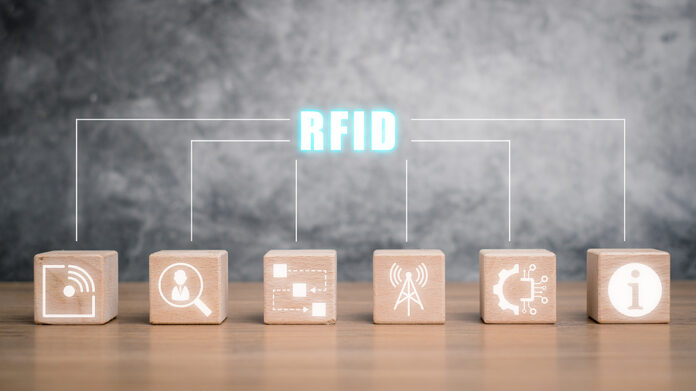
By Ken Feinstein, Vice President, MIDCOM Knowledge Applied sciences
Key takeaways:
-
RFID is quickly turning into important in meals logistics for assembly FDA Meals Traceability Rule (FTR) necessities, providing real-time monitoring, recall effectivity, and enhanced meals security from farm to fork.
-
Superior RFID expertise now consists of sensible tags with environmental sensors that monitor situations like temperature and humidity, turning every package deal right into a mini high quality management agent and enabling proactive problem prevention.
-
RFID, mixed with cloud platforms, permits enterprise-wide visibility and AI-powered logistics, giving early adopters a aggressive edge in compliance, operational effectivity, and shopper belief.
Whereas the FDA’s delay of its Meals Traceability Rule (FTR) might have purchased corporations slightly extra time (July 20, 2028, to be actual), the clock continues to be ticking, and the neatest gamers in meals logistics aren’t ready. Throughout the provision chain, radio-frequency identification (RFID) expertise is entering into the highlight and never simply as a device for compliance, however as the important thing to safer, quicker, and smarter meals operations.
RFID is not the quiet backstage hand monitoring retail attire. It’s now the mind and nervous system of clever logistics, particularly in sectors the place freshness, pace, and traceability are every part. In meals logistics, RFID isn’t a “nice-to-have,” it’s turning into non-negotiable as a result of meals security needs to be non-negotiable, too.
The FTR mandates enhanced traceability recordkeeping for entities that manufacture, course of, pack, or maintain meals on the Meals Traceability Listing (FTL), from leafy greens and deli salads to shell eggs and nut butters. These new necessities are designed to speed up the identification and elimination of doubtless contaminated meals from the provision chain, decreasing the danger of widespread foodborne sickness. Firms should monitor Crucial Monitoring Occasions (CTEs) and preserve Key Knowledge Components (KDESs) all through the lifecycle of traceable merchandise with the intention to comply.
Whereas the brand new deadline moved from January 2026 supplies respiration room, it doesn’t sign a rollback in expectations. The FDA has been clear that these guidelines will not be going away, and lots of corporations, from suppliers to retailers, are already pushing forward with expertise investments to make sure they’re not caught unprepared and in danger for noncompliance. Fortunately, RFID expertise is nicely suited to satisfy the FTR’s calls for.
From labels to lifelines: RFID’s function in meals security and compliance
Regardless of the brand new deadline, meals corporations aren’t slowing down RFID adoption, and for good purpose. The expertise’s means to dramatically enhance traceability and recall effectivity is already being confirmed by early adopters like Kroger, Chipotle, and Albertsons.
What was a barcode scan is now a full transparency system. With RFID, corporations can monitor merchandise by all the provide chain, understanding the place an merchandise is and the way it’s been dealt with. This turns into invaluable within the occasion of a contamination scare, the place fast identification and elimination of affected gadgets can stop shopper hurt and reputational catastrophe.
RFID may also help corporations generate the sortable, digital information that the FDA would require inside 24 hours of request throughout an outbreak or recall. When RFID is embedded into packaging, companies can hyperlink traceability lot codes (TLCs) with cargo and transformation knowledge, permitting for seamless monitoring from farm to fork.
Smarter tags, smarter selections
The RFID of right now is lightyears forward of its early iterations. The following era of tags is constructed for intelligence integrating environmental sensors, elevated reminiscence, and even localized decision-making energy.
Have to know if that field of lettuce sat too lengthy in a sizzling truck? RFID tags can now monitor and retailer situation knowledge like temperature, humidity, and shock-triggering alerts when thresholds are breached. These sensible tags rework each package deal right into a tiny, autonomous high quality management agent. This ends in not solely discovering out that one thing went mistaken, however stopping it earlier than it does. That’s a paradigm shift for chilly chains and meals security protocols.
Tag, you’re it: Smarter packaging for a quicker, brisker meals chain
RFID is turning into extra versatile and meals pleasant than ever. Due to developments in printed electronics, meals producers, distributors, and retailers can now print RFID tags on demand, custom-made for particular merchandise, packaging varieties, or chilly chain necessities. This adaptability is a sport changer for meals logistics, the place SKUs change regularly, packaging codecs range by merchandise, and regulatory labelling wants evolve throughout classes. Whether or not it’s recent produce, frozen meals, or ready-to-eat snacks, RFID tags can now be tailor-made for every product’s journey, monitoring every part from origin to temperature publicity to expiration.
Even higher, these ultra-thin tags could be embedded immediately into meals packaging, bettering sturdiness, stopping label tampering, and sustaining a clear, branded look. Sustainability can be in-built. New research present that RFID supplies can separate cleanly from packaging fibers throughout recycling with no influence on recyclability.
The cloud command middle: RFID meets international visibility
As provide chains stretch throughout borders, RFID’s energy grows exponentially when paired with cloud-based methods. These platforms unify tag knowledge from throughout services, warehouses, and transportation networks providing real-time, enterprise-wide visibility. The elimination of those communication silos is about connecting operations, surfacing actionable insights, and creating responsive provide chains that may pivot immediately, whether or not it’s rerouting a cargo, restocking a retail shelf, or initiating a product maintain. It additionally lays the groundwork for AI-driven optimization and predictive logistics, the place RFID is the sensory enter that fuels smarter, automated selections.
A preemptive method is a aggressive benefit
The FDA’s traceability mandate often is the catalyst, nevertheless it’s not the endgame. RFID is poised to turn out to be the usual infrastructure of clever logistics. Those that deal with it as a compliance checkbox danger lacking its transformative potential. RFID not solely helps meet FDA necessities, it additionally empowers companies to:
- Cut back product shrink and counterfailing
- Speed up recollects with pinpoint accuracy
- Enhance stock visibility and labor effectivity
- Strengthen model belief by transparency
Reasonably than viewing July 2028 as a deadline, corporations ought to see it as the newest acceptable arrival date to a vacation spot the market is already heading towards. Those that get there early will each assure compliance and cleared the path.
The underside line: RFID is already right here
RFID is the infrastructure of right now’s most superior meals provide chains, and it’s quickly shifting from innovation to expectation. Whether or not it’s smarter tags monitoring freshness, cloud-connected dashboards driving responsiveness, or recyclable packaging seamlessly embedded with monitoring expertise, RFID is reshaping how meals strikes, how dangers are managed, and the way belief is constructed.
The query isn’t whether or not you’ll undertake RFID. It’s whether or not you’ll lead with it, or play catch up.
 Ken Feinstein is the Vice President of MIDCOM Knowledge Applied sciences.
Ken Feinstein is the Vice President of MIDCOM Knowledge Applied sciences.












